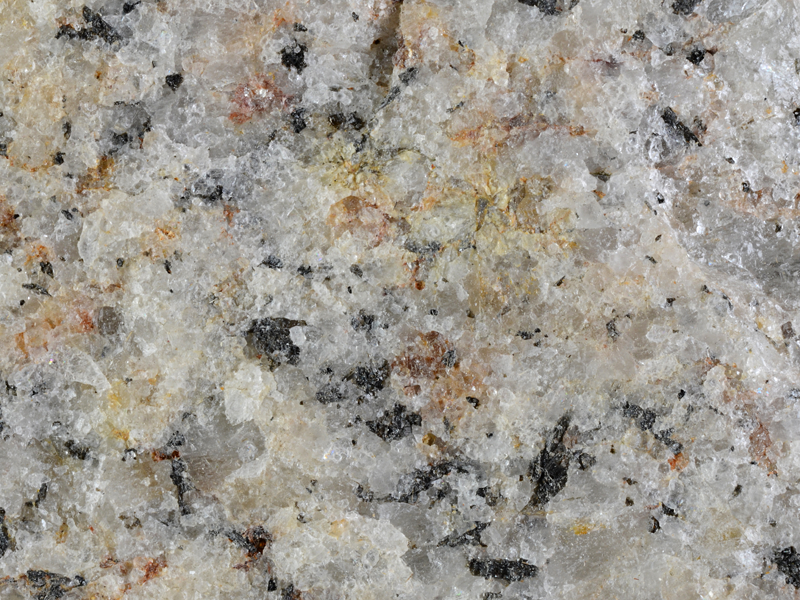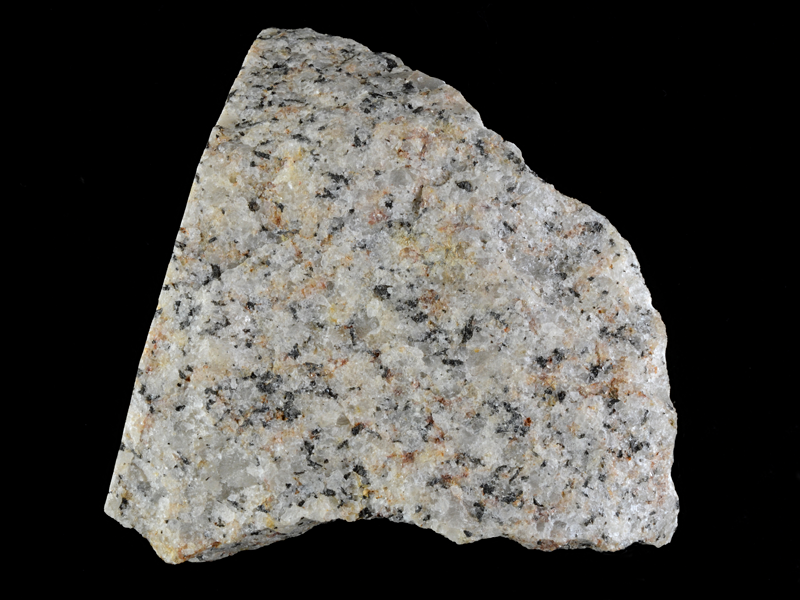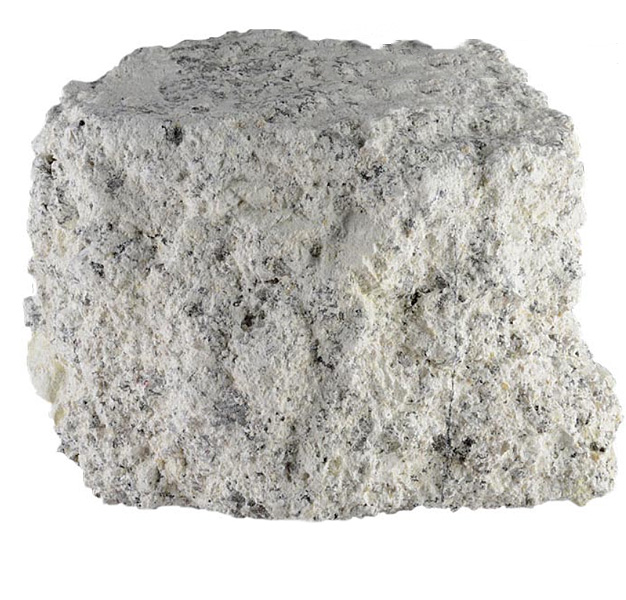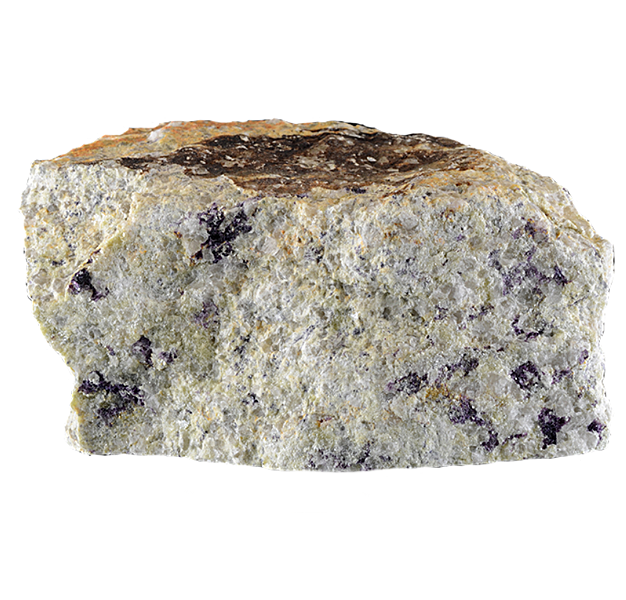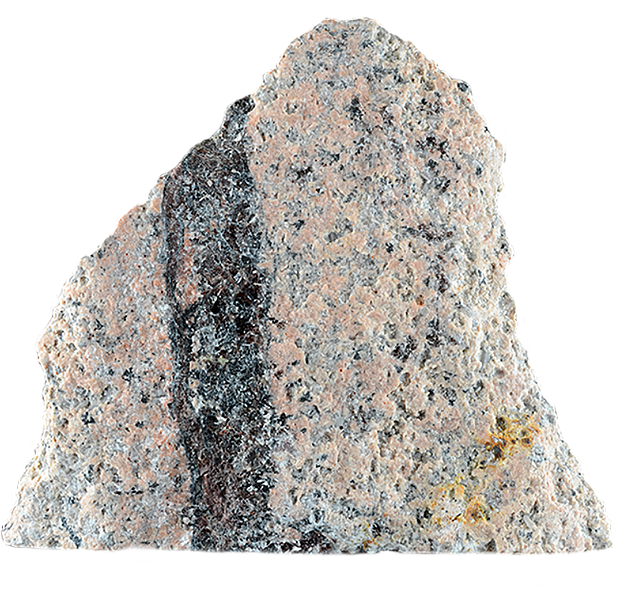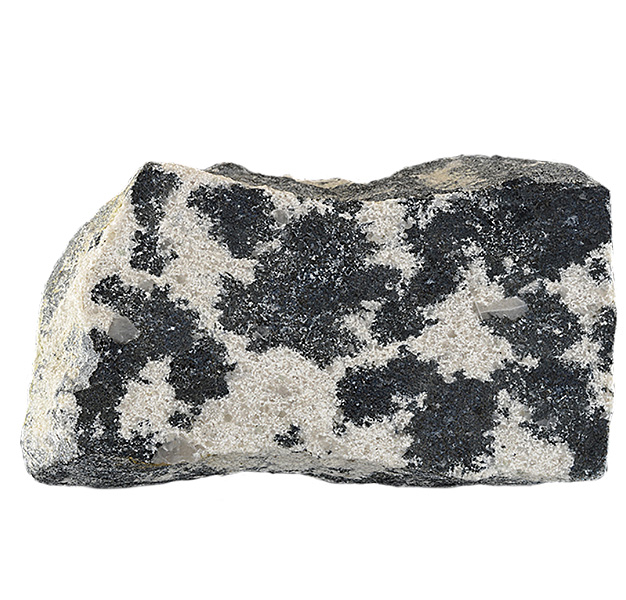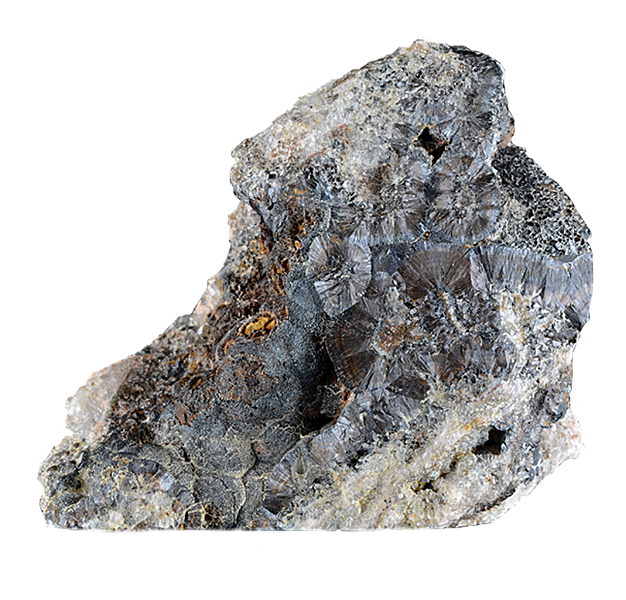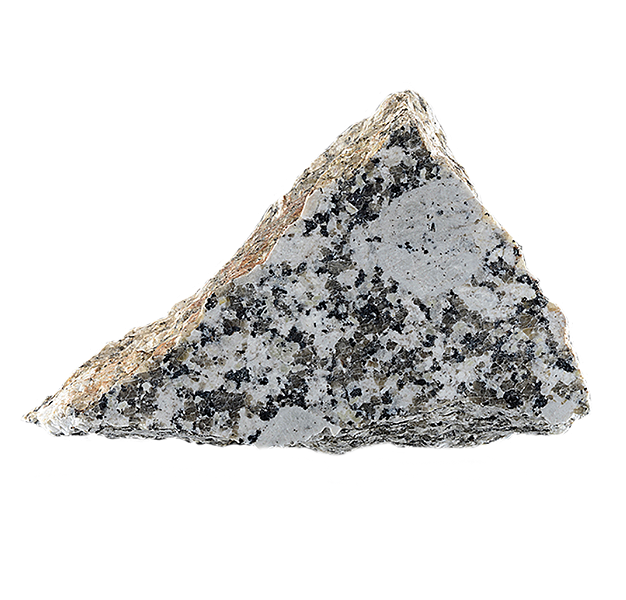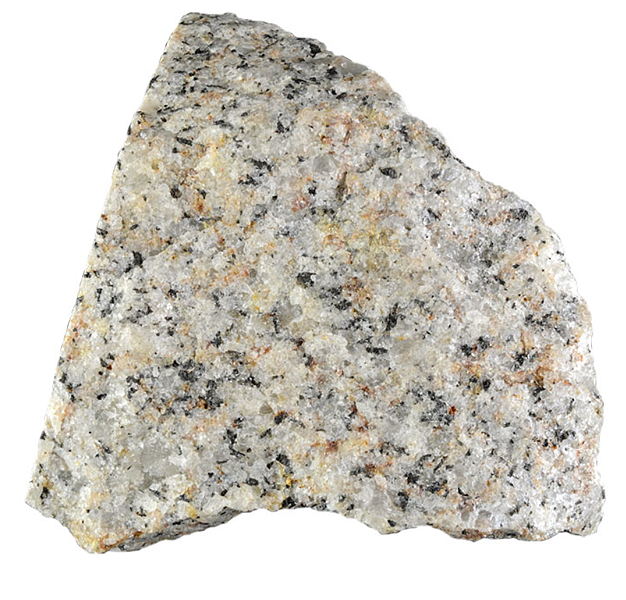
Fact sheet
This rock comes from St Mewan Beacon, Cornwall and was a loose block from a small quarry. The rock is a quartz-topaz tourmaline-rich greisen at the southern edge of the Permo-Carboniferous-age St Austell granite. The sample represents a late stage, highly silica-rich fraction of a hydrothermal saline fluid, from the roof zone of the granite, possibly trapped beneath an impermeable pelitic country rock.
The thin section contains tourmaline that changes from patchy blue and brown to colourless upon rotation — a very unusual pleochroic effect. When viewed in crossed polars the colours are bright but anomalous (not directly comparable with the standard birefringence colours) second order birefringence colours. Topaz is colourless in plane polarised light and grey in crossed polars but can be distinguished from quartz by its higher relief. Orthoclase and rare plagioclase are also present.
A case study of the St Austell granite complex in Cornwall, England, illustrating the range of rocks associated with a granite intrusion. The earliest part of the complex is a siderophyllite (biotite) granite containing muscovite and tourmaline typical of a SW England granite, with many primary magmatic features.
This early intrusion was followed by the intrusion of an evolved volatile-rich magma which was the driving force behind a series of intense hydrothermal processes as volatiles escaped from this magma and helped to establish an extensive alteration halo (aureole). Boron, fluorine and lithium (as well as water) played major roles in the formation of the second intrusion and in the associated hydrothermal processes. Igneous activity lasted around 18 million years from 282 Ma (siderophyllite granite) to 265 Ma (fluorite granite).
